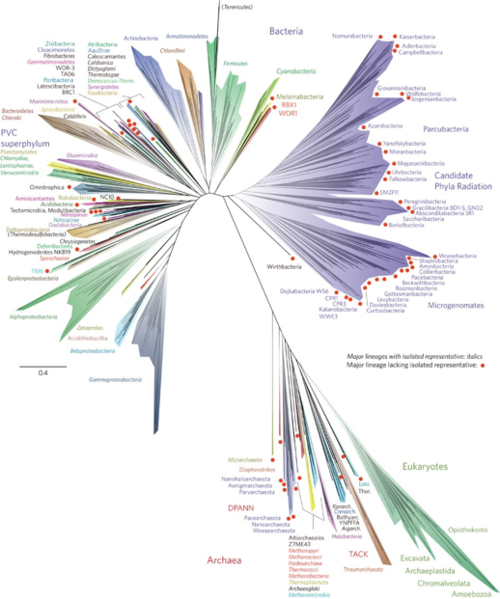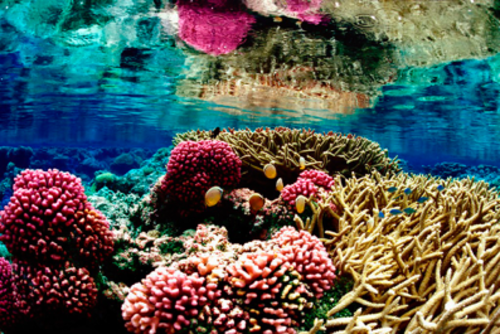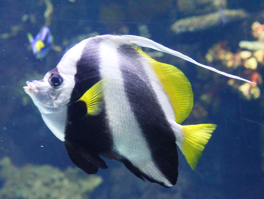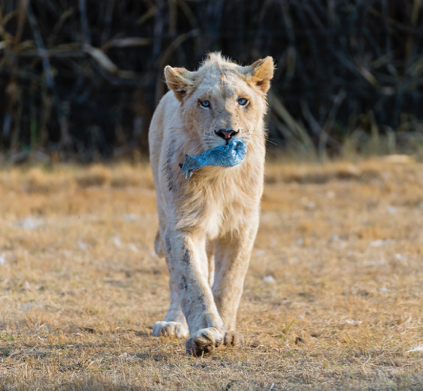Recent blog posts
Blog topics
-
Library ambassadors (80)
-
library week (2)
-
Omni (6)
-
Reno (13)
-
renovation (5)
-
staff (1)
-
Subscriptions ending (29)
Blog posts by audience
Blog posts archive
Science Literacy Week
Hey everyone, It's Kellie and Ahsan, the Student Engagement and Communications co-op students from spring and fall term. We've written a blog post about this year's Science Literacy Week theme: Biodiversity!
What is Biodiversity and its Significance?
According to the Canadian Encyclopedia, Biodiversity is the variety of life on Earth, including plants, animals, bacteria, and fungi. When exploring an ecosystem, one can find countless of interactions, all honed by years of evolution. Earth’s biodiversity is so rich that 86 percent of Earth’s species have yet been discovered (Watson, 2015). A food web or a phylogeny tree gives us a taste of the richness of the interconnection and cycle of nature. From plants providing life through photosynthesis to microorganisms decomposing and returning nutrients to the soil, rich biodiversity provides nutrient storage and recycling. It is the least to say that biodiversity aid in breaking down pollutants and contribute to climate stability, rich biodiversity speeds the recovery of natural disasters.

Figure 1 A current view of the tree of life, encompassing the total diversity represented by sequenced genomes.
Canadian Biodiversity
As a Canadian University, we should feel proud of the vast range of biodiversity that exists in Canada despite its northerly position. According to the Canadian Encyclopedia, Canada consists of 10 million km2 land and freshwater and over 6.5 million km2 marine water; this makes Canada the second biggest country in the world. Canada has a wide range of ecosystems, according to the Canadian Encyclopedia some include temperate rain forest treetop canopies, prairies, tundra, and kelp forests. In addition to the variety of ecosystems, there are around 71,000 named species and 69,000 unnamed species that exist in Canada, excluding viruses (Mcallister, 2015). Biological resources are the fraction of biodiversity used by humanity, according to the Canadian Government, the country’s main natural resources include water, forestry, and mining.
Threat to Biodiversity
Over recent times, biodiversity has been rapidly declining with many species going extinct. Extinction is a natural process; however, these rates aren’t natural. Biodiversity loss is the extinction of species within a given geographic area (Rafferty, 2019). In areas that lack biodiversity, disruption, and harm to the overall ecosystem follow more easily (Rafferty, 2019). For example, a decline in specie may decline genetic variety which in turn may increase inbreeding. Following, the clearing of trees would eliminate shade, temperature, and change much more. Some of the primary drivers of biodiversity loss are pollution, climate change, habitat loss, invasive species, and overexploitation (Rafferty, 2019).

Figure 2
Pollution and over-fishing have caused a major depletion in marine biodiversity; according to Great Barrier Reef Marine Park, the Great Barrier Reef is home to 1625 species of fish, 1400 coral reef species, and over 3000 species of molluscs, yet an estimated 50% of the world's coral reefs have been destroyed. These drivers are influenced by the exponential growth of the human population, increased consumption, and reduced resource efficiency (Rafferty, 2019). Loss of biodiversity is not just terrible for ‘them’. It affects us, humans, as well. Some industries that rely on the abundance of different species are pharmaceutical, agriculture, tourism, and fashion. Thus, due to our heavy reliance on natural resources, disturbing an ecosystem can have catastrophic effects for us all.

Figure 3
How can we help?
It is our responsibility to support and protect the land around us. Here are just a few ideas on ways we can help:
- Educate yourself
- This is the most important thing one can do. Educating ourselves about what’s happening around us can provide opportunities and ways to fight the destruction of natural habitats.
- Leave wildlife habitats undisturbed, especially nesting and denning sites
- Leave native plants undisturbed
- Do not liter and avoid using single-use plastics
- Carpool, use public transit, bike, or walk instead of driving

Figure 4
-Kellie and Ashan
Works Cited
Figure 1. Hug, L. A., Baker, B. J., Anantharaman, K., Brown, C. T., Probst, A. J., Castelle, C. J., Banfield, J. F. (2016, April 11). TITLE OF FIGURE HERE. Retrieved September 18, 2020, from https://www.nature.com/articles/nmicrobiol201648
Figure 2. "Coral Reef at Palmyra Atoll National Wildlife Refuge" by USFWS Pacific is licensed with CC BY-NC 2.0. To view a copy of this license, visit https://creativecommons.org/licenses/by-nc/2.0/
Figure 3. "Coral reef fish IMG_9240" by OZinOH is licensed with CC BY-NC 2.0. To view a copy of this license, visit https://creativecommons.org/licenses/by-nc/2.0/
Figure 4. "White lion walking with blue plastic bottle" by Tambako the Jaguar is licensed with CC BY-ND 2.0. To view a copy of this license, visit https://creativecommons.org/licenses/by-nd/2.0/
Canada, E. A. (2020, June 15). Government of Canada. Retrieved September 23, 2020, from https://www.canada.ca/en/services/environment/natural-resources.html
Great Barrier Reef Marine Park. (n.d.). Marine animals on the Great Barrier Reef. Retrieved September 18, 2020, from http://www.gbrmpa.gov.au/the-reef/animals
Mcallister, D. E. (2015, February 07). Biodiversity. Retrieved September 18, 2020, from https://thecanadianencyclopedia.ca/en/article/biodiversity
Nature Trust British Columbia. (2020, January 15). Biodiversity - What Can We Do? Retrieved September 23, 2020, from https://www.naturetrust.bc.ca/conserving-land/what-can-we-do
Rafferty, J. P. (2019, June 14). Biodiversity loss. Retrieved September 18, 2020, from https://www.britannica.com/science/biodiversity-loss
Watson, T. (2011, August 25). 86 Percent of Earth's Species Still Unknown? Retrieved September 22, 2020, from https://www.nationalgeographic.com/news/2011/8/110824-earths-species-8-7-million-biology-planet-animals-science/#close




